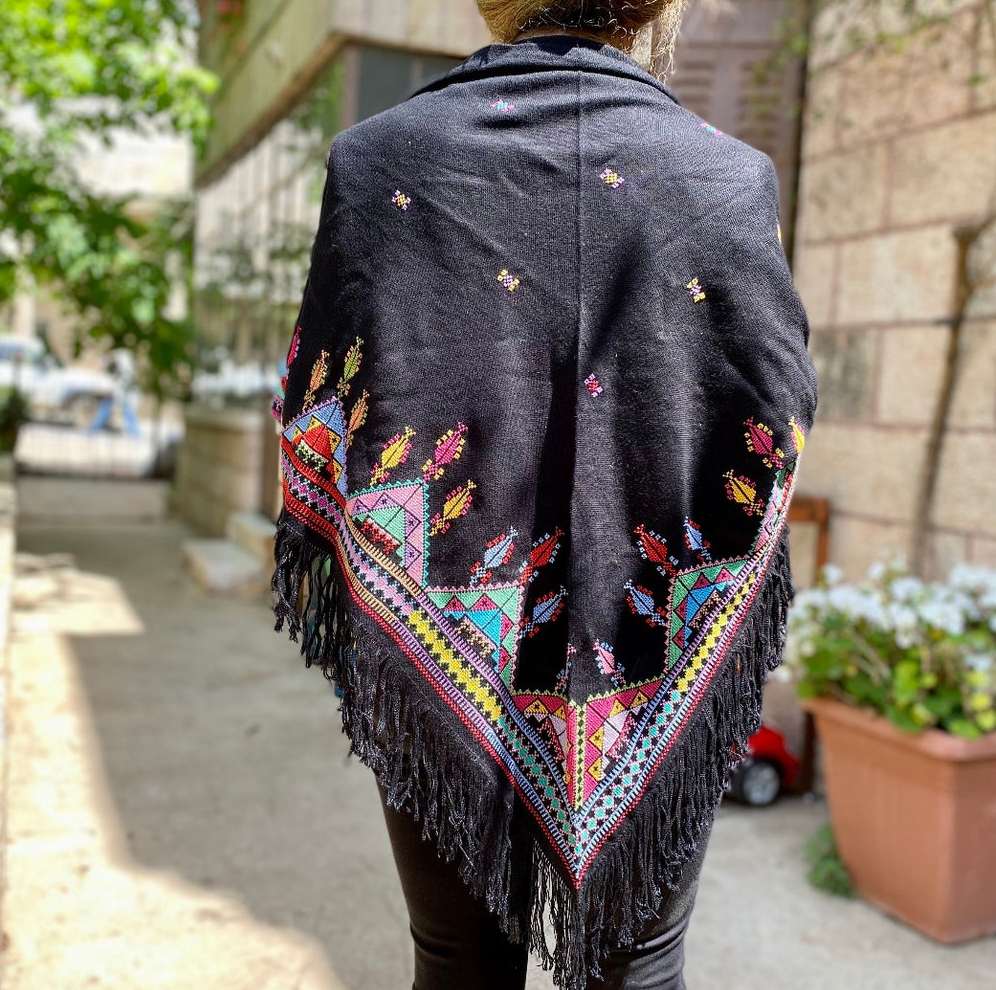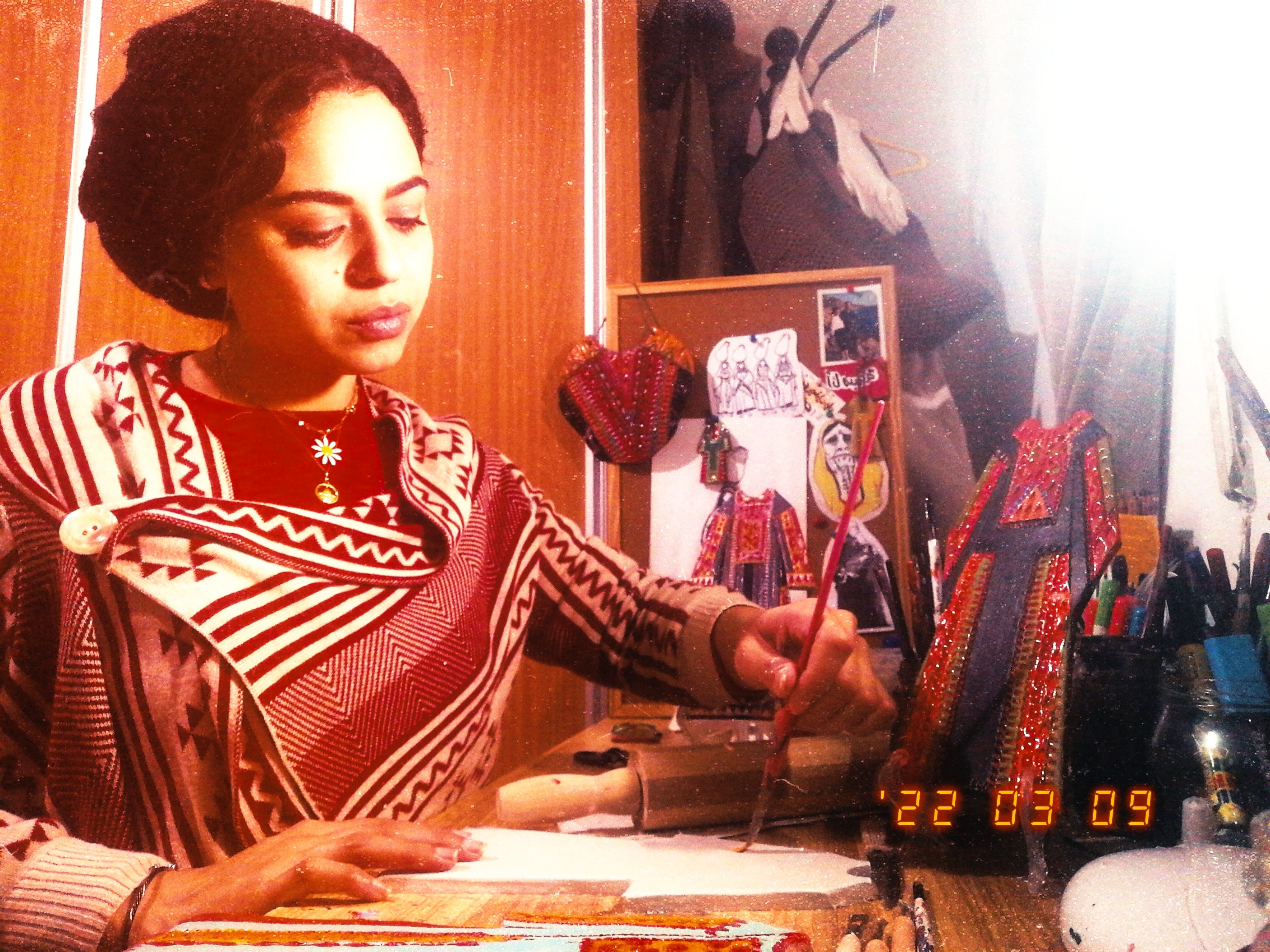
Traditional Embroidery: A Brief History of Palestinian Tatreez

The art of Palestinian embroidery, known as tatreez, has always been an integral aspect of Palestinian heritage, uniquely expressing the vibrant identity of Palestinians. Tatreez is a beautiful and intricate embroidery art form requiring an exceptional amount of patience, dedication, and precision. Tatreez delights and fascinates, but is also deeply rich and symbolic and tells the colorful stories of Palestine, both ancient and evolving.
Tatreez is an arabic word, representing an embroidery style that is uniquely Palestinian and is traditionally known as fallahi. “Fallah means farmer, village worker, tiller of the soil. The cross-stitch assumed the name fallahi because it was the stitch embroidered by the fallaha [Palestinian] farm woman.” - Tania Tamari Nasir and Widad Kawar, Palestinian Embroidery | Traditional Fallahi Cross Stitch

In the early origin of tatreez, the landscape was a major source of inspiration for Palestinian women in designing many patterns and motifs. This speaks to the variation in style that was common to see among all of the different tatreez expressions that were particular to each Palestinian village. These variations initially served as identifiers for Palestinian women, representing social status and the area of Palestine they lived in based on the style of tatreez they wore.
For example, the style of tatreez traditional to Gaza is known for its repetition of the cypress tree motif, usually in combination of both upright and upside down trees, while Ramallah is known for its rich and continuous use of bright and deep red thread color. Most villages integrated some of the same motifs into their tatreez with variations that were both slight, yet discernible.
Following the forced displacement of Palestinians beginning in 1948, the language of tatreez evolved to continue to reflect the experiences of Palestinians. During this time, it was declared illegal to display the Palestinian flag. As a result, Palestinian women began to incorporate the Palestinian flag and its colors into their tatreez as a means of resistance to the occupation of Palestine. Consequently, tatreez came to be a very important expression of the identity, heritage and peaceful resistance of Palestinian women.
Tatreez is not just a decoration, not just an adornment, but a language of symbols, rich in color and texture. It is not just a cultural function of Palestinians, but has and continues to be integral to the livelihood of Palestinians, refugee and diaspora Palestinians alike. Thus, tatreez serves as a means of unifying all of Palestinians, woven together in their love for their country, their honor of their heritage, and their dedication to preserve their ancient culture.

Tatreez is a knowledge that is traditionally passed from mother to daughter as a means of preserving heritage. Our handmade tatreez collection is primarily stitched by women artisans in Gaza cooperatives and has become a very important source of income generation in areas of Palestine where women don’t have other income opportunities. Thank you for helping us to preserve this tradition. Shop our full handmade tatreez collection here.
Image #1: hand-embroidered shawl made by women at the Sulafa Embroidery Center in Gaza
Image #2: masterpiece of different stitches from around Palestine by Sima’s Designs
Image #3: photo taken at Am’ari refugee camp in the women’s center, which is focused on income generation and empowerment through tatreez






Leave a comment
This site is protected by hCaptcha and the hCaptcha Privacy Policy and Terms of Service apply.